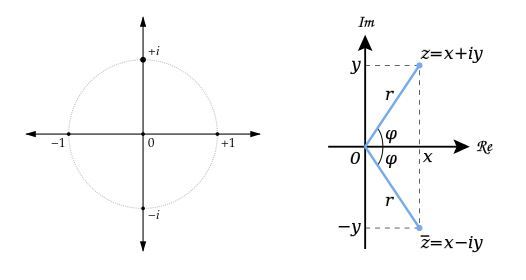#complex number
Beyond Descartes - Part 8:
A Good Convention Gone Bad,
An Opportunity Missed
Composite Dimension and
Amplitudes of Potentiality
Episode 2


(continued from here)
We cannot blame Descartes for imaginary numbers. It was he, after all, who christened these numbers “imaginary” due to his disdain for them. We can, however, fault him for his lack of insight into how his coordinate system could be extended to create a viable substitute to show that imaginary numbers and the complex plane were nonsensical and make them unnecessary. Alas, that was not to be. Certain powerful forces of history decreed that imaginary numbers were here to stay and we seem stuck with them still, nearly five centuries later.
Not all would agree that imaginary numbers are a bad convention. We should all, however, be able to agree that they are a convention and nothing more. They were invented by humanity.[1] Mathematics may not have taken to them at first - but did eventually welcome them into its fold for better or worse. The real damage was done when physics did the same without first subjecting the mathematical concepts involved to the kind of scrutiny and empirical review it demands of its own theories.
Where is the proof that imaginary numbers and complex plane in fact apply to the real world and particularly to the subatomic realm? It is lacking in the main, and though the geometric concepts have indeed been successfully applied to a number of branches of physics and explanations of a variety of physical phenomena, the reconciliation is incomplete, the fit an uncomfortable one, and too many mysteries remain unexplained.
The term imaginary unit refers to a solution to the equation x2 = -1. By convention, the solution is usually denoted i. As no real number exists with this property, the imaginary number i extends the real numbers and creates an entirely new and different category of numbers. And crucially, at this point an assumption is made, a rather sweeping assumption. It is assumed that the properties of addition and multiplication we’re familiar with - (closure, associativity, commutativity and distributivity) - continue to hold true for this new species of number, or I should say, for this newly derived artificial species of number. That may fly in the ivory tower[2] of pure mathematics, but it lacks the wings and propelling force required to maneuver effectively in the real world that physics investigates. Still, the complex plane, generated by mathematically motivated minds, was soon adopted by physicists the world over.[3]
Mandalic geometry offers an alternative solution in the effective combination of dimensional numbers, composite dimension, and plane of potentiality. We’ll take a close look at potential numbers first. Let’s see how they stack up against the imaginary numbers, how and where they differ. Distinctions between complex plane and potential plane are subtle but they make for a world - a universe, actually - of difference. When next we meet, kindly check all preconceptions at the door. Entirely untrodden paths await.
(continuedhere)
Image: (lower left) Imaginary unit i in the complex or Cartesian plane. Real numbers lie on horizontal axis, imaginary numbers on the vertical axis. By Loadmaster (David R. Tribble), (Own work) [CC BY-SA 3.0orGFDL], via Wikimedia Commons; (lower right) A diagram of the complex plane. The imaginary numbers are on the vertical axis, the real numbers on the horizontal axis. By Oleg Alexandrov [GFDLorCC-BY-SA-3.0],via Wikimedia Commons
Notes
[1] Let those who suppose differently, who believe them to be an indelible part of nature itself, prove their case. Until they do, I will see fit to call such numbers manmade inventions.
[2] I use the term ivory tower without malice of any kind in this context, rather judiciously, because mathematics demands no more than internal consistency for its particular brand of truth. It is not much interested in examining its definitions and axioms to determine how they shape up against hard reality. Mathematicians leave that "sordid work" to physicists and philosophers, both of whom are more willing to dig in the mire of nature, seeking its actual relics. Enthusiastically to persist in such a real world-oblivious manner as pure mathematicians do, I think, requires a very special type of mind, one I don’t fully understand myself.
[3] In some circles this would be considered no less than a monumental leap of faith, particularly in view of the many unproved assumptions made in creation of imaginary and complex numbers. This was, in fact, the New Faith promulgated by Descartes’ contemporaries, the rationalists of the Age of Reason, to supplant the Old Faiths of Religion and Scholasticism.
© 2015 Martin Hauser
Please note: The content and/or format of this post may not be in finalized form. Reblog as a TEXT post will contain this caveat alerting readers to refer to the current version in the source blog. A LINK post will itself do the same. :)
Scroll to bottom for links to Previous / Next pages (if existent). This blog builds on what came before so the best way to follow it is chronologically. Tumblr doesn’t make that easy to do. Since the most recent page is reckoned as Page 1 the number of the actual Page 1 continually changes as new posts are added. To determine the number currently needed to locate Page 1 go to the most recent post which is here. The current total number of pages in the blog will be found at the bottom. The true Page 1 can be reached by changing the web address mandalicgeometry.tumblr.com to mandalicgeometry.tumblr.com/page/x, exchanging my current page number for x and entering. To find a different true page(p) subtract p from x+1 to get the number(n) to use. Place n in the URL instead of x (mandalicgeometry.tumblr.com/page/n) where
n = x + 1 - p. :)
-Page 284-
